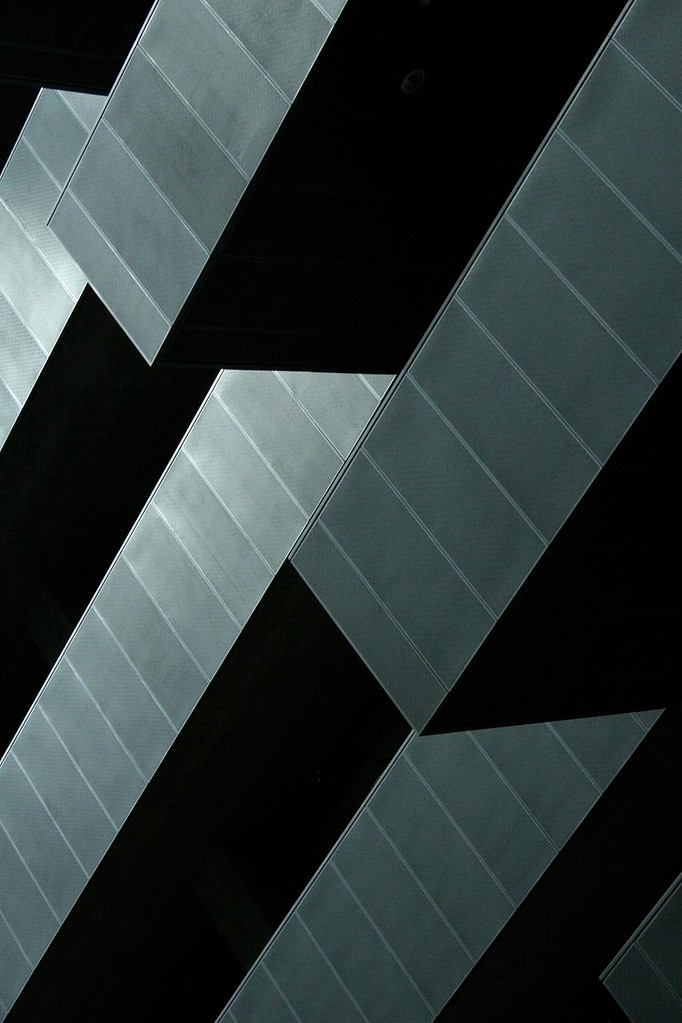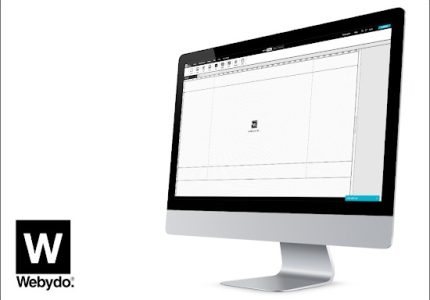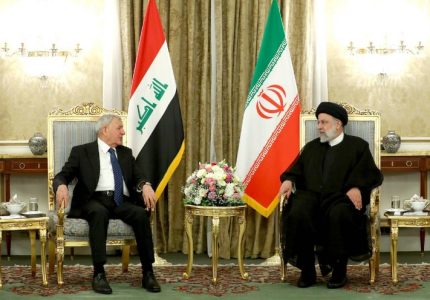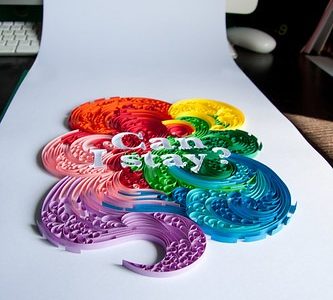Factors Influencing Website Design Costs
Understanding the factors that influence website design costs is essential for creating a budget and making informed decisions. Various elements such as complexity, functionality, design requirements, and the experience level of developers can significantly impact the overall expense. Recognizing these factors helps businesses and individuals plan effectively to achieve their online goals within their financial constraints.
Complexity and Functionality
Website design costs are significantly impacted by factors such as complexity and functionality, which determine the amount of work required to develop a site. The more complex the website, the higher the costs, as it often involves advanced features, custom coding, and intricate layouts. Functionality also plays a crucial role; adding elements like e-commerce capabilities, interactive forms, or user accounts increases development time and resources. Additionally, the level of customization, the number of pages, and integration with third-party tools can influence overall expenses. Ultimately, a website with simple design and basic features will cost less compared to a highly detailed and feature-rich site, making these variables key considerations for estimating website design costs.
Design Style and Customization
Website design costs can vary significantly based on several factors related to design style and customization levels. A more complex and visually intricate design typically requires additional time and expertise from designers, increasing overall costs. Customization, such as tailored graphics, unique layouts, and specific functionality, also plays a crucial role; highly personalized websites demand specialized skills and resources, thereby elevating expenses. Additionally, choosing a modern, minimalist design may be more cost-effective compared to elaborate, elaborate themes that involve detailed animations or advanced features. Ultimately, the desired aesthetic and degree of customization directly influence the project’s complexity and cost, making it essential to balance design preferences with budget considerations.
Number of Pages and Content Quantity
The cost of website design is significantly influenced by the number of pages and the overall content quantity. As the number of pages increases, more time and resources are required to develop, design, and optimize each section, leading to higher costs. Additionally, a larger volume of content, such as text, images, videos, and interactive elements, demands extensive planning and integration, which can further elevate the project’s expenses. Customizing each page to align with branding and user experience goals also contributes to variations in pricing. Consequently, businesses should consider their content scope and site structure when estimating website design costs to ensure a realistic budget and successful project delivery.
Integration with Third-party Services
Website design costs are influenced by a variety of factors that can significantly impact the overall budget. The complexity of the design, including custom graphics and animations, demands more time and skilled labor, increasing costs. The number of pages and the level of interactivity also play crucial roles in shaping expenses. Additionally, the expertise of the designers and developers involved, along with the use of advanced features like responsive design, influence pricing. Hosting, domain registration, and ongoing maintenance are additional considerations that contribute to the total cost.
Integration with third-party services is another vital aspect affecting website design costs. Incorporating tools like payment gateways, social media plugins, analytics, and marketing platforms requires technical expertise and additional development time. Ensuring compatibility and seamless functionality with these external services can increase costs, especially if custom integration is necessary. Moreover, ongoing updates and support for third-party integrations may incur additional expenses, but they are essential for maintaining a secure and efficient website experience.
Responsive and Mobile Design
Several factors influence the cost of designing a website, particularly when considering responsive and mobile design. Understanding these factors can help in budgeting and planning for an effective online presence.
- Complexity of Design: Custom, intricate designs with unique graphics and animations tend to be more expensive than simpler templates.
- Number of Pages: A larger website with numerous pages requires more time and effort, increasing overall costs.
- Responsive and Mobile Design: Ensuring the website functions seamlessly across various devices adds to the development time and costs.
- Functionality and Features: Incorporating features like e-commerce, contact forms, integrations, and user accounts can significantly impact pricing.
- Design Expertise and Experience: Hiring highly experienced designers or agencies generally results in higher fees but may deliver better quality and responsiveness.
- Content Creation: Costs may increase if new content, images, videos, or custom graphics are required for the website.
- Maintenance and Updates: Ongoing support, updates, and hosting services factor into the overall cost of a website.
Types of Website Design Services
Website design services encompass a wide range of options tailored to meet the diverse needs of businesses and individuals. From creating visually appealing layouts to developing fully functional e-commerce platforms, these services vary in scope, complexity, and cost. Understanding the different types of website design services available can help you choose the right approach to establish a strong online presence.
Template-Based Design
Template-based design services involve creating websites using pre-designed templates that can be customized to fit specific branding and content needs. This approach allows for quick and cost-effective website development, making it ideal for small businesses, startups, or individuals with limited budgets. Templates provide a structured layout and design elements that can be easily modified without extensive coding skills, ensuring a professional appearance with minimal effort.
Custom Design
Custom website design services involve creating unique, tailored websites that align perfectly with a business’s brand identity and specific requirements. Unlike pre-made templates, custom designs offer flexibility in layout, functionality, and aesthetics, ensuring the website stands out and provides an optimal user experience. These services typically include comprehensive planning, branding, user interface (UI) and user experience (UX) design, and development that is specifically crafted to meet the client’s goals.
The cost of custom website design can vary significantly depending on the complexity of the project, the level of customization required, and the experience of the designers. While it may be more expensive than using templates, the investment often results in a more professional, scalable, and distinctive website that can better support business growth and branding efforts.
One-Page Websites
One-page websites are a popular type of website design service that offers a streamlined and user-friendly experience by consolidating all essential information onto a single page. These websites are ideal for small businesses, portfolios, event pages, or startups seeking a clean and modern look without the complexity of multiple pages.
Typically, one-page websites utilize various design styles such as parallax scrolling, minimalistic layout, or creative visual storytelling to engage visitors and guide them through the content seamlessly. They often incorporate sections like About, Services, Portfolio, Testimonials, and Contact, all accessible through smooth scrolling or navigation menus.
When considering website design services, factors like customization level, visual elements, responsiveness, and animations influence the overall cost. One-page websites tend to be more affordable than multi-page sites due to reduced complexity and development time. Costs can vary based on the designer’s expertise, the complexity of design features, and additional functionality needed, but they generally offer a cost-effective solution for establishing a professional online presence quickly and efficiently.
E-commerce Website Design
Website design services encompass a wide range of options tailored to meet different business needs. These include custom website design, template-based design, responsive design, and specialized services such as branding and UX/UI optimization. Each type of service offers unique benefits, from personalized aesthetics to quick deployment and cost efficiency.
E-commerce website design is a specialized category focused on creating online stores that are visually appealing, easy to navigate, and optimized for sales. It involves integrating shopping carts, secure payment gateways, product listings, and mobile responsiveness. The design process ensures a seamless shopping experience, encouraging customer retention and increasing revenue. Costs vary based on complexity, features, and customization level, but investing in professional e-commerce design can significantly impact sales and brand growth.
CMS (Content Management System) Development
Website design services encompass a variety of solutions tailored to meet different business needs. These include custom website design, template-based design, responsive design, and e-commerce site development. Each type offers unique benefits, from personalized aesthetics to quick deployment and optimized user experience.
Content Management System development is a crucial aspect of website design, enabling users to manage content efficiently without technical expertise. Popular CMS platforms like WordPress, Joomla, and Drupal allow for easy updates, SEO optimization, and scalability. Custom CMS development is also an option for businesses with specific requirements, providing tailored functionalities and integrations.
The choice of website design services and CMS impacts the overall cost and timeline of a project. Custom designs and specialized CMS solutions tend to cost more but offer higher flexibility and branding control. Understanding the different types of services and CMS options helps businesses make informed decisions aligned with their budget and goals.
Cost Breakdown of Website Design
Understanding the cost breakdown of website design is essential for businesses and individuals planning to create a professional online presence. From initial planning to final deployment, various factors contribute to the overall expenses, including design, development, and additional features. Analyzing these components helps in budgeting effectively and making informed decisions to achieve a successful website.
Design and Development Fees
The cost breakdown of website design typically includes several key components such as design, development, and additional fees. Design fees cover the creation of layouts, user interfaces, and visual elements that ensure the website is aesthetically appealing and user-friendly. Development fees involve coding, functionality integration, and backend setup to make the website operational and responsive across devices. Additional costs may include domain registration, hosting, content creation, SEO optimization, and ongoing maintenance. Understanding these elements helps in estimating the overall investment required for a professional website that meets business goals and provides a seamless user experience.
Domain Name and Hosting Expenses
The cost breakdown of website design, domain name, and hosting expenses provides a clear understanding of the overall investment needed to establish an effective online presence. Website design costs can vary depending on the complexity, customization, and whether you hire a professional or utilize DIY tools. Domain name expenses are relatively modest but crucial for brand identity and easy access to your site. Hosting expenses are ongoing costs that ensure your website remains accessible and functions smoothly, with options ranging from shared hosting to dedicated servers. Evaluating each component helps in budgeting appropriately and making informed decisions for your website project.
Content Creation and Copywriting
The cost breakdown of website design, content creation, and copywriting is essential for understanding the overall investment required to develop a professional website. Typically, website design expenses include layout, user interface, user experience customization, and visual elements, which can vary depending on complexity and sophistication. Content creation encompasses the development of engaging, relevant content tailored to your target audience, including text, images, and multimedia components. Copywriting specifically involves crafting persuasive, clear, and SEO-optimized text that enhances site engagement and search engine ranking. Overall, these components are often bundled into packages or billed separately, with costs influenced by project scope, expertise level, and deadlines. Proper budgeting for each aspect ensures a well-rounded website that effectively communicates your brand message and meets user needs.
Additional Functionality and Plugins
The cost breakdown of website design often includes expenses related to the visual layout, user experience, and necessary functionalities. Additional functionalities and plugins can significantly influence the overall budget by adding features that enhance website performance and user engagement.
- Design Costs: These cover the initial creation of the website’s layout, color schemes, typography, and overall aesthetic. They can range from premade templates to custom designs, affecting pricing accordingly.
- Development Fees: Includes coding, responsive design adjustments, and testing across different devices. Custom features may require specialized development which increases costs.
- Additional Functionality: Features such as contact forms, e-commerce capabilities, chatbots, or multimedia integration add to the complexity and cost of the project.
- Plugins and Extensions: Many websites rely on plugins for SEO optimization, analytics, security enhancements, or social media integration. The number and complexity of plugins directly impact costs, especially if premium or custom plugins are needed.
- Maintenance and Updates: Ongoing costs for plugin updates, security patches, and technical support should also be considered in the overall budget.
Maintenance and Updates
The cost breakdown of website design, maintenance, and updates involves several key components that contribute to the overall expenditure. Initial design costs typically include activities such as planning, wireframing, graphic creation, and coding, which can vary depending on the complexity and features of the website. Maintenance costs cover regular hosting, security updates, bug fixing, and performance optimization to ensure the website operates smoothly over time. Updates are ongoing expenses related to content additions, feature enhancements, and design refinements that keep the website current and aligned with business goals. Overall, understanding these components helps in planning a budget that sustains the website’s functionality and relevance in a competitive digital landscape.
Budget Ranges for Different Types of Websites
When planning a website, understanding the budget ranges for different types of websites is essential for making informed decisions. The cost of designing a website can vary significantly depending on its purpose, complexity, and features. Whether creating a simple blog, a professional business site, or an advanced e-commerce platform, knowing the typical budget ranges helps set realistic expectations and ensures alignment with your goals and resources.

Basic Business Websites
Basic business websites are essential for establishing an online presence and typically require a moderate investment in design and development. The budget range for such websites generally falls between $1,000 and $5,000, depending on the complexity and features needed. These sites usually include essential pages like Home, About, Services, Contact, and may feature simple branding elements. Costs may vary based on whether the site is built using templates, customized themes, or fully bespoke designs. For small businesses just starting or with limited budgets, DIY website builders with pre-designed templates can be a cost-effective solution, often costing under $1,000 annually. Conversely, businesses seeking a more tailored appearance and advanced functionalities may invest more, sometimes exceeding $5,000, to secure professional design, custom development, and ongoing support. Ultimately, the budget for a basic business website depends on the desired quality, functionality, and the level of customization required to meet specific business objectives.
Intermediate E-commerce Sites
Intermediate e-commerce sites typically require a moderate budget to develop, balancing functionality, design, and scalability. These websites often incorporate customized features such as advanced product filters, secure payment gateways, and customer account management, which increase overall costs. The budget range for developing an intermediate e-commerce site usually falls between $5,000 and $20,000, depending on the complexity of features and the quality of design desired. Factors influencing the cost include the choice of platform, level of customization, and whether hiring professional developers or using a theme-based approach. Investing within this range ensures a professional, user-friendly online store capable of supporting growing business needs while maintaining good performance and security standards.
Advanced Custom Websites
Advanced custom websites typically require a higher budget due to their complex features, tailored functionalities, and unique design elements. These websites are often built from scratch or with extensive customization, ensuring they meet specific business needs and provide a highly personalized user experience.
The cost for advanced custom websites generally ranges from $10,000 to $50,000 or more, depending on factors such as the scope of work, the complexity of features, the expertise of the development team, and the level of design detail. This investment covers custom coding, integrations with third-party services, advanced security measures, and ongoing maintenance.

It’s important to consider that the pricing for these websites reflects not only the initial development but also potential future enhancements, scalability, and the need for a dedicated support team to manage complex functionalities.
Large-scale Enterprise Websites
Large-scale enterprise websites typically require substantial investments due to their complexity, extensive features, and the need for scalability, security, and integration with various systems. The budget for such websites often ranges from $250,000 to over $1 million, depending on the scope and industry requirements.
These websites usually include custom design, advanced functionalities, content management systems, e-commerce capabilities, security protocols, and integrations with third-party services. The cost also covers ongoing maintenance, updates, and potential future expansions. Proper planning and collaboration with experienced development teams are essential to ensure the website meets enterprise standards while staying within budget.
Choosing the Right Website Design Budget
Determining the right budget for your website design is a crucial step in bringing your online vision to life. A well-planned budget helps you balance quality, features, and expenses, ensuring your website effectively represents your brand while remaining cost-effective. Understanding the factors that influence website design costs can guide you in making informed decisions that align with your goals and resources.
Assessing Business Needs and Goals
Determining the appropriate budget for website design begins with a clear understanding of your business needs and long-term goals. Assessing what you want to achieve with your website—such as increasing sales, building brand awareness, or providing customer support—helps identify the features and complexity required. Consider the scope of the project, including design, functionality, content creation, and ongoing maintenance, to establish a realistic budget. Aligning your financial resources with your strategic objectives ensures that you invest wisely, balancing quality and affordability to create an effective online presence that supports your business growth.
Balancing Cost and Quality
Setting the right budget for website design is crucial to ensure a balance between quality and cost, providing a website that effectively meets business goals without overspending. Understanding the factors that influence cost helps in making informed decisions and allocating resources wisely.
When choosing a website design budget, consider the following key points:
- Define Your Goals: Clarify the purpose of your website, such as selling products, providing information, or building a brand, to determine the level of complexity needed.
- Assess Your Needs: Decide on features like e-commerce capabilities, custom graphics, or integrations, as these impact development costs.
- Research Market Rates: Get quotes from different designers or agencies to understand typical pricing for the features you require.
- Prioritize Quality: Invest in professional design and development to ensure a user-friendly, responsive, and visually appealing site that can generate results.
- Balance Cost and Value: Opt for solutions that offer the best features within your budget, avoiding both underinvestment and unnecessary expenses.
- Plan for Future Growth: Allocate budget for updates and maintenance, ensuring the website can evolve with your business.
Ultimately, a well-considered budget that balances cost and quality will lead to a functional, attractive website that supports your business objectives without unnecessary financial strain.
Long-term Cost Benefits
Setting an appropriate budget for website design is crucial for ensuring a successful online presence while maintaining financial efficiency. Investing wisely in quality design can lead to increased user engagement, better brand representation, and higher conversion rates.
While it might be tempting to opt for the lowest-cost options, a well-designed website built within a realistic budget often results in long-term cost benefits. High-quality design and development can reduce the need for frequent updates, troubleshooting, and redesigns, saving money over time. Additionally, a professional website can improve search engine rankings, attract more visitors, and generate increased revenue, ultimately providing a significant return on investment.
When choosing a website design budget, consider not just the initial costs but also the ongoing expenses related to maintenance, updates, and scalability. Investing in a flexible, user-friendly design ensures your website can adapt to future needs without costly overhauls. Balancing upfront costs with long-term value is key to making an informed decision that supports sustainable growth and success.
Tips for Cost-effective Design
Setting a realistic budget for website design is crucial to ensure a balance between quality and affordability. Understanding your goals and allocated resources helps in making informed decisions about the scope and features of your website. It’s important to prioritize essential elements and consider future scalability to avoid overspending on unnecessary features.
To achieve a cost-effective design, consider using adaptable templates or themes that require minimal customization. These options often come at a lower cost and still provide a professional appearance. Additionally, leveraging open-source platforms and tools can significantly reduce expenses while maintaining functionality.
Hiring freelance designers or small agencies can be more budget-friendly compared to larger firms. Clearly communicating your needs and expectations can help prevent costly revisions and ensure the project stays within your financial limits. Planning your project in phases allows you to spread out costs and make adjustments along the way.
Investing in a well-organized, user-friendly design enhances user experience and can lead to better engagement and conversion rates, ultimately providing greater value for your budget. Regularly evaluating your website’s performance and making ongoing improvements without overspending is also vital for maintaining an effective online presence.




